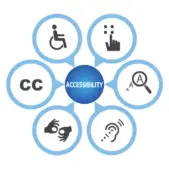Customer Experience (CX) encapsulates the entirety of a customer’s perception and interaction with a brand. The significance of CX has surged in recent years, driven by elevated customer expectations, greater access to information, and the pervasive influence of social media. Beyond its growing prominence, CX empowers businesses with potent tools to actively engage customers and gain insights into their perspectives.
The combined impacts of these functions have vaulted CX into the spotlight as businesses increasingly realize its value as a competitive differentiator and a powerful medium for building customer loyalty.
Let’s take a deeper dive into CX. What is it? And how can you improve customer experience through strategy, personalization, and technology?

What Is CX? Defining Customer Experience
Customer experience is the sum total of the impressions and feelings a customer gets across the entire lifecycle of their interactions with a business. This includes both emotional and rational elements, extending across a complete set of interrelated touchpoints, including:
- Initial research into the products and services supplied by a company
- Browsing a company’s products and services
- Purchasing products and services through online or in-store channels
- Product packaging, branding, and information
- Customer service interactions, especially with respect to repairs, refunds, and exchanges
For businesses, the goal is to provide a frictionless customer experience that generates positive perceptions across the whole journey.
When managed correctly, CX can be a key customer loyalty driver. Consumers want to buy products and services from businesses that provide a superior customer experience. This makes CX a critical generator of customer retention.
Differentiating CX, UX, and Customer Service
Customer experience is often conflated with overlapping concepts of user experience (UX) and customer service. UX and customer service are both important elements of CX—but ultimately, they comprise only part of a broader whole.
Customer experience applies to a customer’s interactions with a business, whereas UX works within a narrower scope, focusing on a company’s digital presence, customer interfaces, and the individual products or services a company offers. It also encompasses elements such as website design, accessibility, usability, and convenience.
As with UX, customer service is an important aspect of CX—but ultimately represents only one element of a broader whole. By definition, customer service is limited to the one-on-one interactions that take place between a consumer and a business. It influences the customer experience—sometimes significantly—but ultimately focuses solely on solving problems, answering questions, and ensuring customer satisfaction with a purchase.

Why CX Matters to Every Business
A positive customer experience has emerged as one of the most important ways businesses differentiate themselves from competitors. Businesses that offer superior customer experience generate better word of mouth. With social media extending word of mouth to the online realm, it’s more critical than ever for businesses to nurture a positive public perception. Good CX drives organic business growth, creating a turnkey way for companies to build their customer bases and revenues.
Furthermore, acquiring a new customer can cost four to five times more than retaining an existing customer. Beyond the obvious financial benefits arising from repeat business, companies can significantly reduce their marketing costs by optimizing the customer experience.
Perhaps most importantly, a positive CX makes customers happy. Research has shown that satisfied customers spend an average of 140% more than those with an underwhelming or negative customer experience. Dissatisfied customers are also more likely to churn, leading to lost revenue opportunities and negative word of mouth. These outcomes can all erode loyalty and diminish the brand or company’s reputation among consumers.
UpTop Perspective
Customers expect to have their needs met and their issues resolved instantly. Make it easy, make it fast and make it frictionless.
Key Elements of a Successful CX Strategy
Businesses that want to improve customer experiences should begin by approaching CX from a strategic standpoint. Developing and refining a complete and unified CX strategy yields better results than piecemeal approaches, which target individual elements of the customer experience independently of the broader whole.
To that end, consider these three critical tools for CX strategy development:
Mapping the Customer Journey
Journey mapping helps businesses better understand customers’ preferences, needs, and pain points. The “customer journey” encompasses the end-to-end totality of a consumer’s experience when sourcing, researching, purchasing, exchanging, and servicing products.
Effective approaches to mapping the customer’s journey involve these core elements:
- Perform customer research to identify the target audience through the development of user personas that represent the different market segments
- Create a journey map for each persona, identifying key moments or touch points that the user has within their journey as they engage with the company over time and across channels
- Add the emotions, questions, and pain points customers face at each touchpoint to uncover the largest opportunities for improvements
- Review the map with key stakeholders and share it across the organization to build customer empathy and internal alignment around CX initiatives
UpTop Perspective
If you’re new to journey mapping, don’t bite off more than you can chew. Start with simpler user journeys within your CX ecosystem. Once you get comfortable with mapping a journey, build your confidence by moving on to more complex ones.
Personalizing the Customer Experience
In the digital age, customers expect businesses to provide an experience tailored to their unique preferences and buying behaviors. Experience data (X-data) and operational data (O-data) reveal opportunities to craft individualized experiences that elevate CX and build loyalty.
To maximize the impact of your personalization efforts, consider the touchpoints where customers interact with your products, services, and brand. Are you interacting with customers across all of those touchpoints and in ways that resonate with each segment? If you find gaps in your approach, explore opportunities to broaden your presence in underutilized channels.
Here are some additional user personalization tips and strategies:
- Provide users with product, service, and content recommendations based on their past interactions and preferences
- Implement self-service tools that guide users along the entire product research, purchasing, and customer service pathway
- Offer incentives for users to create secure personal accounts where they can express their product, content, communication, and engagement preferences
- Limit your collection of personal data to strictly necessary information to foster customer privacy and trust

Using Technology to Drive Your CX Strategy
User research through behavior monitoring and consumer analytics platforms can generate additional insights into customer preferences and behaviors. These tools support user anonymization, allowing you to benefit from them without compromising user security or privacy.
Technological tools like artificial intelligence (AI) and experience management software can also help. These and other advanced tech tools help businesses identify, predict, and respond to customer needs in near-real time. In addition, conversational AI, immersive augmented reality (AR), and virtual reality (VR) can significantly advance CX by creating more engaging and personalized interactions.
However, it’s critical for businesses to balance their use of CX tech tools with data protection and user privacy. Failures in these areas—whether real or perceived—can lead to significant reputational harm.
What Is CX? It’s a Path to a More Profitable Business
The days of CX being a peripheral or secondary consideration are over. In the modern business landscape, customer experience has emerged as one of the most important and critical differentiators businesses can use to gain and maintain a competitive advantage.
Comprehensive strategies that integrate user research, personalization, and advanced technologies deliver the most significant and enduring impact. We offer deep, proven expertise in these areas—and across many other facets of the customer journey.
Contact us to arrange an individual consultation today. It’s time to build a better experience for your customers.


